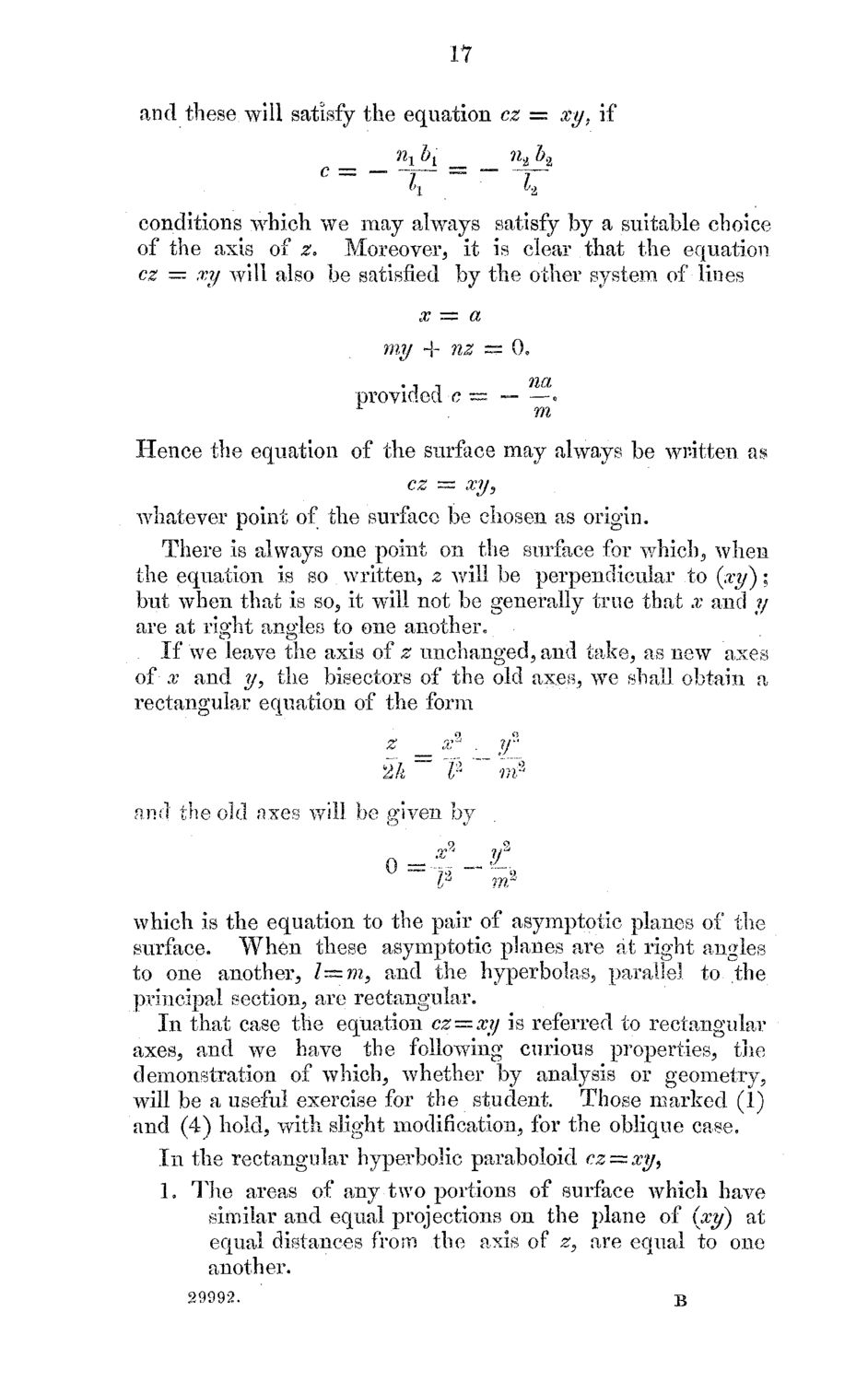| |
| |
Caption: Mathematical Models Catalog of a Collection of Models of Ruled Surfaces
This is a reduced-resolution page image for fast online browsing.

EXTRACTED TEXT FROM PAGE:
n and these will satisfy the equation cz = xy. if — _ nl^l = — ^ &a conditions which we may always satisfy by a suitable choice of the axis of z. Moreover, it is clear that the equation cz — xy will also be satisfied by the other system of lines x = a m y + nz ~ 0. ., t na provided c = . m Hence the equation of the surface may always be written as cz = xy, whatever point of the surface be chosen as origin. There is always one point on the surface for which, w h e n the equation is so written, z will be perpendicular to (xy); but when that is so, it will not be generally true that x and y are at right angles to one another. If w e leave the axis of z unchanged, and take, as n e w axes of x and y, the bisectors of the old axes, w e shall obtain a rectangular equation of the form z x/A . ?j" 2k *~ T2 ~ 'm* ~ and the old axes will be given by 9 Q . which is the equation to the pair of asymptotic planes of the surface. W h e n these asymptotic planes are at right angles to one another, Z = m , and the hyperbolas, parallel to the principal section, are rectangular. In that case the equation cz~xy is referred to rectangular axes, and w e have the following curious properties, the demonstration of which, whether by analysis or geometry, will be a useful exercise for the student. Those marked (1) and (4) hold, with slight modification, for the oblique case. In the rectangular hyperbolic paraboloid cz~xy, 1. T h e areas of any two portions of surface which have similar and equal projections on the plane of (xy) at equal distances from the axis of z, are equal to one another. 29992.
| |